Monastery on the rock. Abbey of San Michele
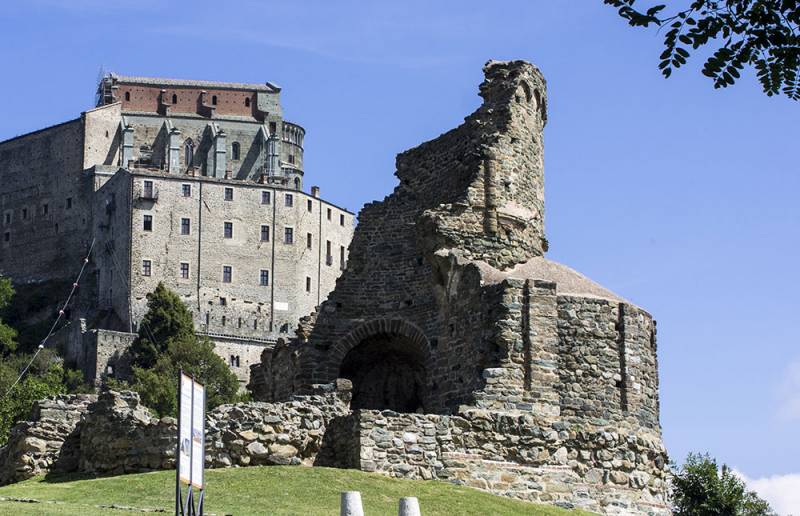
Abbey of San Michele
There was a monastery; in its blank walls
In his old age, one gray-haired monk
Saved by holy living and prayers
And the days were calmly approaching the end.
A. S. Pushkin “Monk”
History and castles. We continue our story about castles, only today we will not visit a castle, but... a complex of buildings, mainly for religious purposes, which is located at the very top of Mount Pirciriano in Italy, near the village of San Pietro and not far from Turpin in Northern Italy, region of Piedmont.
What kind of “complex” is this that will be discussed in a series of materials about castles? This is an abbey! And it is called San Michele (or also Sacra di San Michele or the Abbey of San Michele della Chiusa).
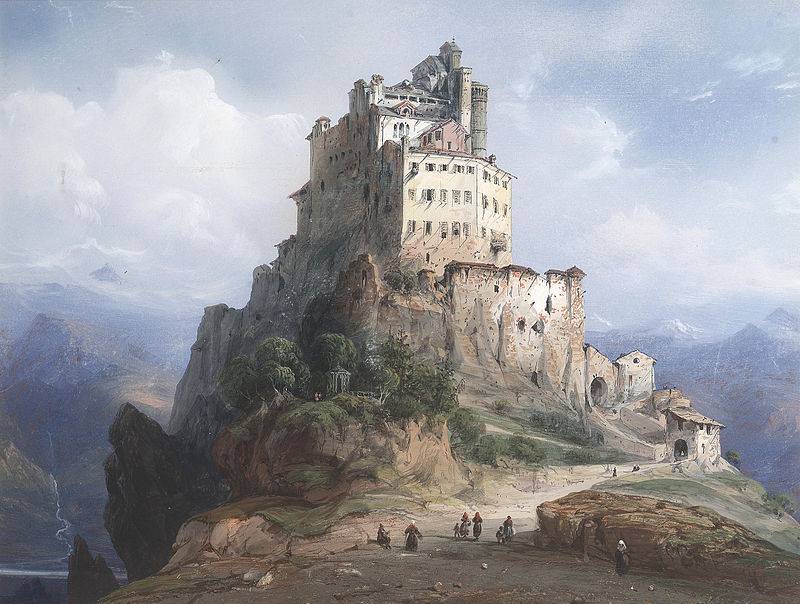
The Monastery of San Michele in a XNUMXth-century painting (by Carlo Bossoli)
And yes, indeed, all of its buildings are built on a 26-meter rocky mountain top, and this mountain itself rises 960 meters above sea level. This place is located on the very border of the Cottian Alps and is one of the most famous monuments of Piedmont.
And also here is the stop of the pilgrimage road Via Francigena - the first in Italy. And for natural reasons, this abbey, from the moment of its creation, was nothing more than a real fortress, which was very difficult to get to, as well as to capture it.
It is known that even during the times of the great Rome, there was a garrison post of the Roman army at this place, that is, barracks and a watchtower, surrounded by a rampart and a palisade. The garrison stationed here guarded the road through the pass in case of an invasion by the Gauls. And the memory of that time has been preserved and has even survived to this day: there is a memorial plaque dating back to the XNUMXst century, and it was installed by the Roman family of Surio Clemente.
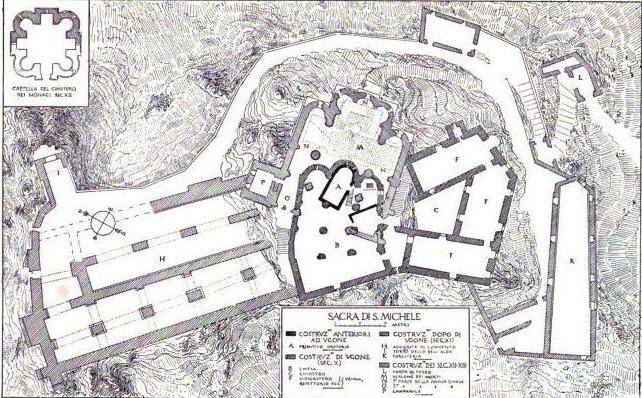
The map of Sacra di San Michele is important, and all because it is a curious place in many ways. For example, there is the building of the Sacra ticket office, which in the past was called the “shepherd's house” or “margaro” (in the Piedmontese dialect). This building was important because of the presence on it of the border marker between two cities, Chiusa and Sant'Ambrogio. So, the residents of Chiusa believe that it was fraudulently removed by the residents of Sant'Ambrogio in order to destroy evidence that Sacra belonged to the municipality of Chiusa. The litigation between the two cities has been dragging on for 300 years, but to this day the fence of the Sacra and the church itself, or rather its eastern part, are listed in the municipality of Sant'Ambrogio, and the western part is in the municipality of Chiusa San Michele
Then the Roman fort was occupied by the Lombards and began to use it to protect themselves from the Franks. There is an assumption that a small chapel dedicated to Michael the Archangel was built here already in the XNUMXth century, since the Lombards themselves were Christians. In the XNUMXth century, his cult was spread in this place by Emperor Frederick I Barbarossa, and later his nephew Frederick II of Hohenstaufen did the same, that is, the tradition of venerating Michael the Archangel in these places was extremely ancient!
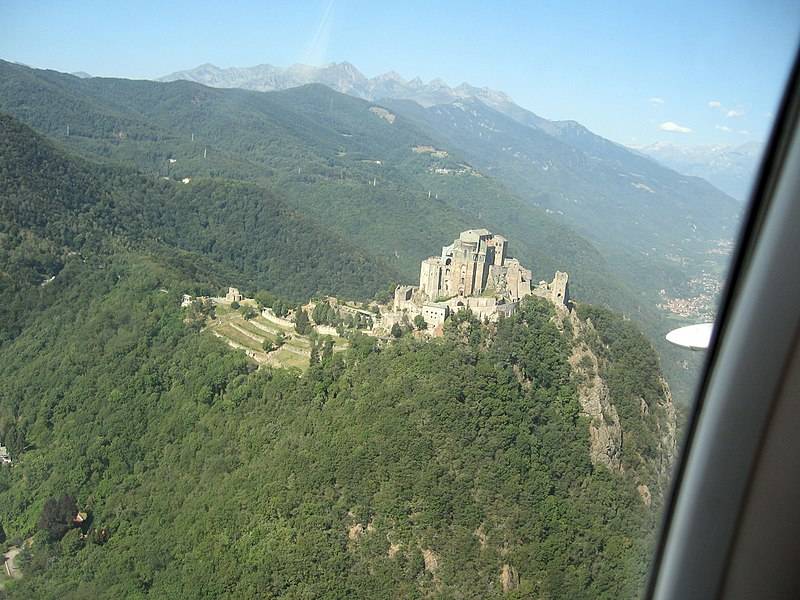
Bird's eye view of the San Michele complex
Well, large-scale construction began here in 983 and continued until 987, although some believe it was later.
However, this does not matter much, since the antiquity of the monastery is indisputable in any case. There is, for example, a legend that a certain Giovanni Vincenzo, Archbishop of Ravenna, retired here from the bustle of the world and began to become a hermit, and his asceticism took place at the turn of the XNUMXth and XNUMXth centuries. Again, according to legend, he had a vision. Archangel Michael himself appeared to him in person and ordered him to build a sanctuary. The chapel was built first, and angels flew to consecrate it, so that the peasants living nearby saw a bright light emanating from it at night, and it is clear that they immediately believed in a miracle.
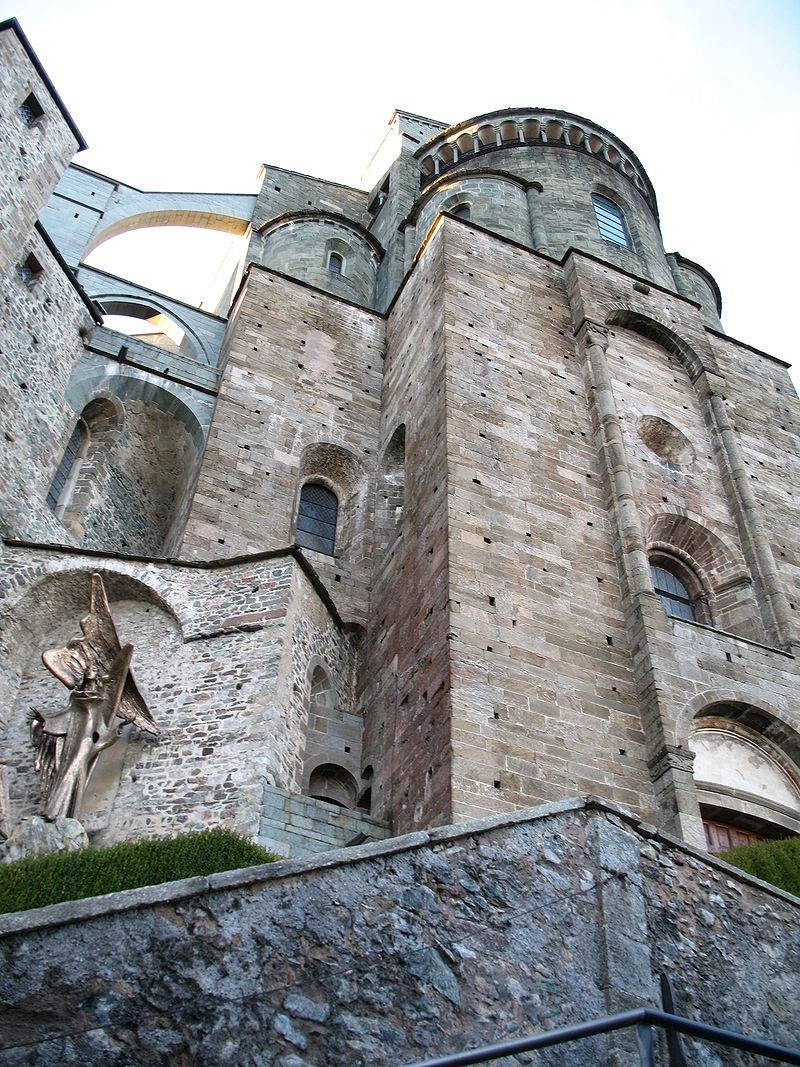
Facade
Well, written documents regarding this monastery and those who lived in it date back only to the end of the 966th century. The monk William lived there at that time, and he also wrote the Chronicon Coenobii Sancti Michaelis de Clusa, that is, the chronicle of the monastery of his residence. It names the year 999 as the founding date of this monastery. But he also wrote elsewhere that the monastery was founded during the pontificate of Pope Sylvester II (1003–XNUMX), who had previously been abbot of the Abbey of San Colombano di Bobbio.
However, such discrepancies in the text of the same person are not surprising. It is quite possible that in one case of writing he was quite sober, and in another... not so much!
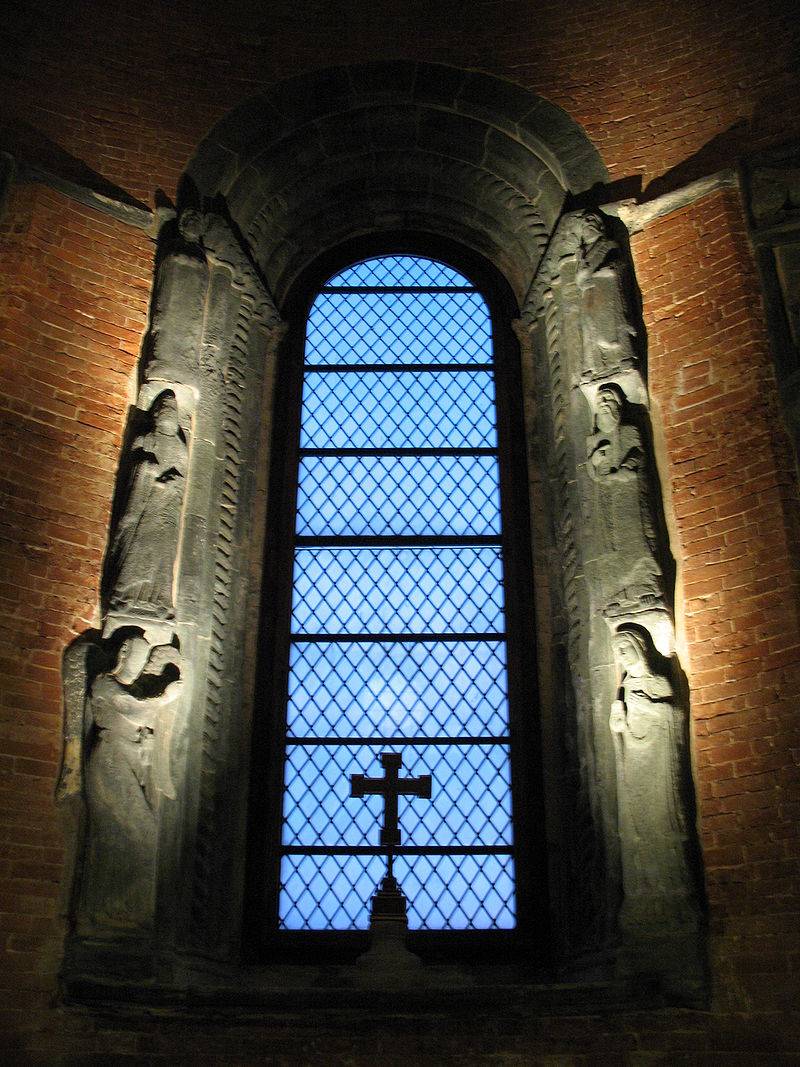
On the sides of the window there are semi-columns crowned with figures of the four evangelists with their symbols - Matthew, Mark, Luke, John)
Little by little the monastery was rebuilt. So, next to the old chapel from the time of Giovanni Vincenzo, another one was built. Today it forms the central part of the modern Old Church. Moreover, all its niches and arches, as well as columns, were clearly influenced by Byzantine architecture, which, by the way, was popular in the XNUMXth century in the Ravenna area.
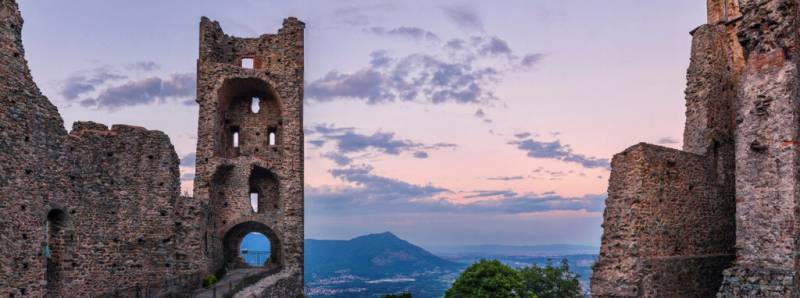
The Torre della Bell'Alda overlooks the cliff at the end of the wall, named after the village girl Alda, who was caught by enemy soldiers praying for peace. Trying to escape from them, she threw herself off a cliff, calling on Saint Michael and the Mother of God for help, and was saved, finding herself unharmed at the bottom of the abyss. Unfortunately, she decided to abuse this heavenly grace because of her vanity and thirst for money and told her incredulous fellow villagers that she could make a second such jump. Alas, God's mercy did not indulge her sinful nature, and she found a terrible death where she had previously found unexpected salvation
At the end of the XNUMXth century, another active donor for the construction appeared: the French Count Hugo de Montboissier, the lord of Orec-sur-Loire in Auvergne, and he was also the head of the Abbey of Saint-Michel-de-Cuxa in the Pyrenees. Apparently, this count sinned quite a bit, because Pope Sylvester II, in order for the church to forgive him for his sins, demanded from him... money for the further development of San Michele.
So a small monastery appeared in the abbey, where several monks could live in solitude, and pilgrims could also stay overnight. And between 1015 and 1030, the architect Guillaume de Volpiano developed a project for the construction of the New Church, which was then erected on the site of the Old.
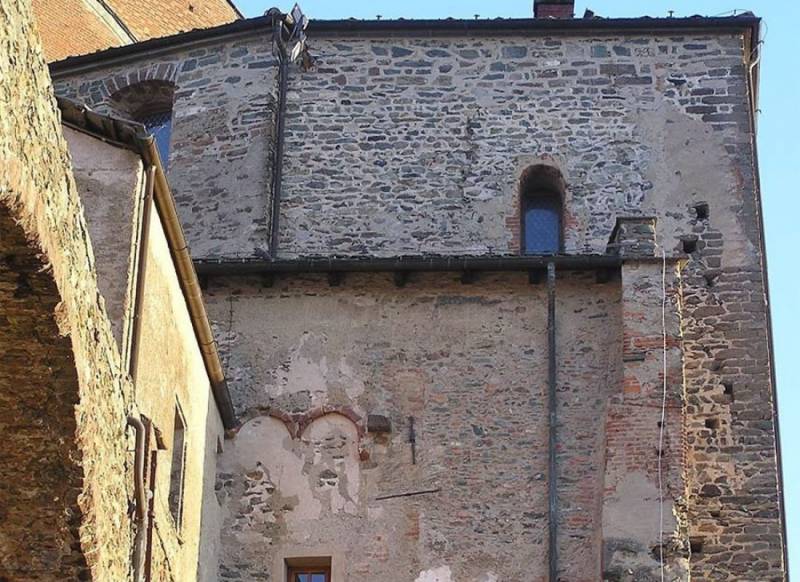
Interesting examples of stonework
Starting from the middle of the XNUMXth century, the monks of the Order of St. Benedict began to play an important role in the fate of San Michele. They built a good and spacious guest house, separate from the monastery and able to accommodate the many pilgrims who walked along the Via Francigena to the Mont Cenis pass and needed rest.
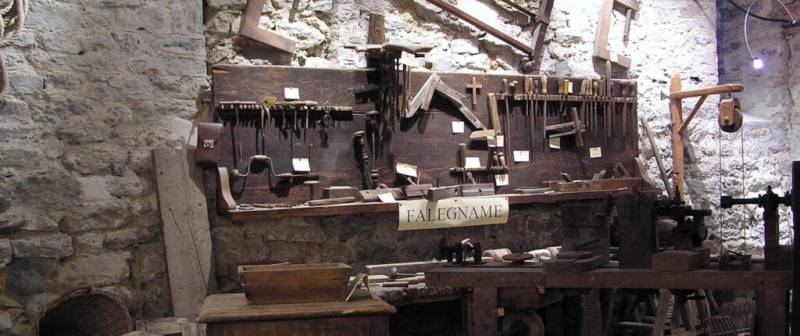
The Sacra di San Michele Museum is a room located on the ground floor of the old monastery, which in the past was used as a woodshed and then as a storage room. Today it is a small museum that houses forgotten and out-of-use antique objects and tools of everyday work, which are displayed in the exhibitions of the carpentry and blacksmith workshops
The northern part of the buildings is destroyed today. And it was built, again, in the 1099th century and was called the “New Monastery”, where there were many cells, a library, kitchens, as well as a refectory and workshops. From 1131 to XNUMX, the monastery was headed by Abbot Ermengardo, under whom many more new buildings were built in the monastery.
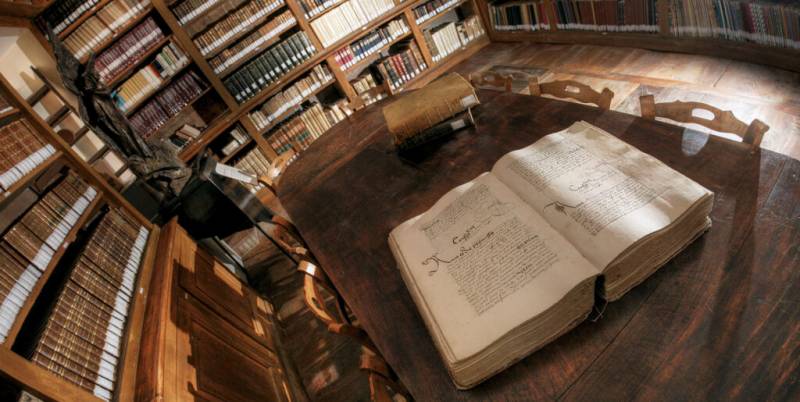
The monastery library contains many ancient volumes. It would be interesting to get acquainted with them, wouldn’t it?
And then, somewhere from the middle of the XNUMXth century, new buildings began to be erected in the Gothic style, because fashion is fashion, and not only in clothing, but also in construction.
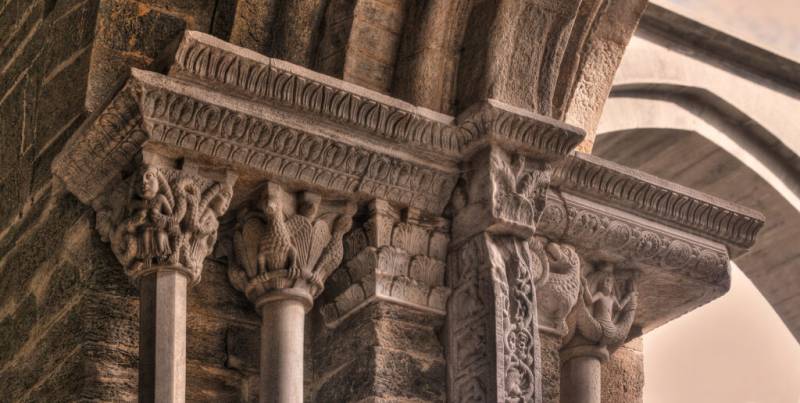
Column capitals. Truly amazing carvings and figures depicted on them
But then one important event happened that seriously affected the fate of the monastery.
In 1362, Prince Jacques of Savoy lost his power and possessions due to a conflict with the House of Savoy. His son, who was also deprived of the right to inherit, Philip II of Savoy-Achaia, swore revenge. And in retaliation he plundered the village of Sant'Ambrogio di Susa and destroyed many of the monastery buildings. Moreover, Philip II was supported in this not at all godly matter by the then abbot Peter III of Fongeret.
It was impossible to forgive such a thing, and in 1381 Count Amedee VI of Savoy asked Pope Urban VI to remove the obstinate abbot from San Michele, which was done. Now the monastery began to be managed by appointed commandants. But after this, the popularity of San Michele among pilgrims fell, the number of donations also decreased (for what kind of abbey is it without an abbot), and the abbey gradually began to fall into disrepair.
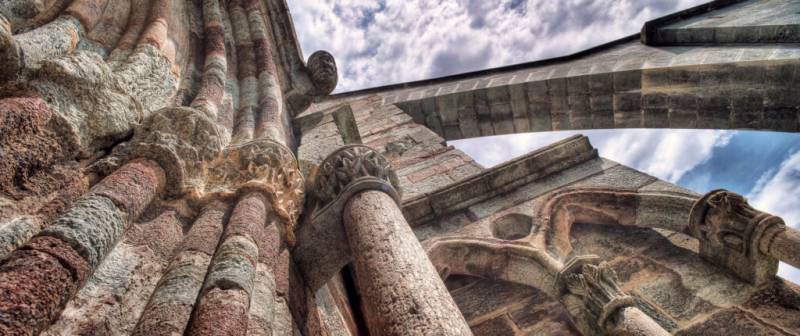
Gothic looking to the sky!
And in 1622, Cardinal Maurizio of Savoy managed to convince Pope Gregory XV to completely close this complex, since only three monks lived there. There was also an implicit but important goal - to reduce the influence of the Benedictines, depriving them of their important center. We also thought about saving: we had to spend a lot of money on repairing this huge complex.
In 1629, the French troops of Marshal Nicolas Catin stopped here and used the abbey and monastery buildings as a base. The siege of Turin in 1706 added to the complex of troubles, so that eventually its buildings fell into disrepair and fell into ruins.
In 1836, King Charles Albert of Savoy came up with the idea that a religious community should be revived in San Michele. He suggested that he lead the work to restore the monastery to the philosopher and priest Antonio Rosmini-Serbati, who had already gained popularity as the founder of the Congregation of “Brothers and Sisters of Love.” He agreed and settled in San Michele.
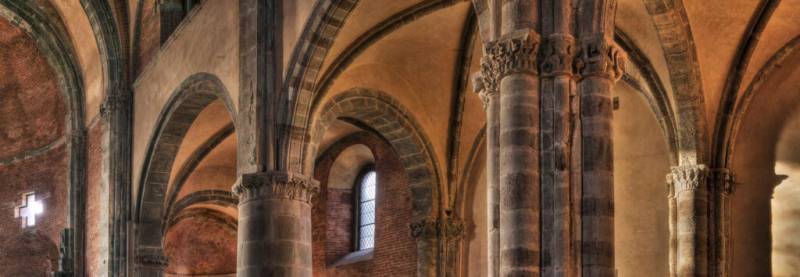
Inside the church there are impressive columns, many small columns and pilasters. All of them are crowned with expressive and symbolic capitals: there are 139 of them in total
And then the king even wanted to build a tomb for all his ancestors here. The burials of 24 representatives of the House of Savoy were found, whose ashes were transported from the Turin Cathedral to the Abbey of San Michele.
Moreover, the work was done downright titanic. Very heavy (weighing five tons each!) sarcophagi were made from green stone. A road has been built into the mountains to transport them. Yes, they were not delivered right away, and besides, at first there were only 16. Many of them turned out to be famous historical figures, including Cardinal Maurizio of Savoy, who, ironically, rested in precisely the place that he himself proposed to be consigned to complete oblivion.
At the beginning of the 30th century, serious reconstruction work was carried out at the abbey. At the same time, the architect Alfredo d'Andrade introduced elements of the neo-Romanesque style into its architecture. Throughout the 40s and early 1944s, peace and quiet reigned here, but in XNUMX the Germans suddenly came here and conducted a search in San Michele, trying to find weapon for the partisans. They searched, but did not find.
In the 1980s, restoration work began here again, which was completed before the visit of Pope John Paul II, who arrived at the monastery on July 14, 1991. And then tourists flocked here, eager to see the local beauty and experience the monastery’s holiness.
In addition, there are stunningly beautiful paintings here. And the most interesting is the triptych of Defendente Ferrari (circa 1520). This is the most precious masterpiece belonging to Sacra. Taken from the main altar, it was restored and placed in the Old Choir.
The center is dominated by the graceful Madonna, standing on a lunar arch and surrounded by 12 cherubs, nursing the baby Jesus. The side panels depict Archangel Michael defeating the devil. The baby's charm is admirable, and the position of the legs is very natural. Maria’s magnificent face inspires confidence: her gaze is modest, the overall impression is of sweet melancholy, innocence and modesty. At the base there is an exquisite predella on which the author depicted the Visitation of Mary, the Nativity of the Child Jesus and the Adoration of the Magi.
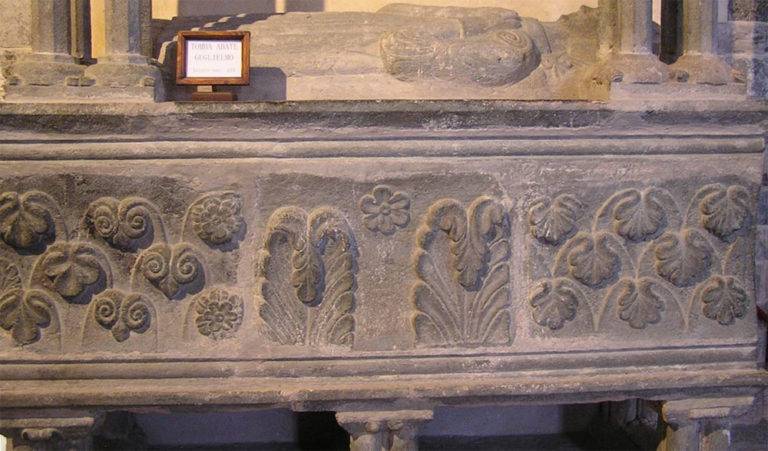
And this is exactly one of the five-ton sarcophagi!
Thus, in 2016, more than 100 people visited the monastery museum alone. True, on the night of January 000, 24, there was a strong fire in the Old Monastery, but San Michele was lucky in that the most important part from an architectural point of view was not affected by the fire.
And then the famous writer Umberto Eco visited here and was inspired to write his historical novel “The Name of the Rose”...
To visit the abbey you need to buy a ticket. The route includes a tour of the cathedral, the Portale dello Zodiaco (the entrance decorated with the signs of the zodiac), the church with paintings, the panoramic terrace and the ruins of the New Monastery. Along the visitor's path there are stands with QR codes with explanatory videos. Tickets can be purchased on site or online. No reservation required. Total cost: 8 euros. Children from 6 to 18 years old and people over 65 years old are admitted free!
PS
Photographs from the website of the Abbey of San Michele were used as illustrative material.
Information